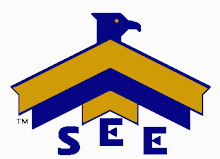The needs for effective communication in a leadership role are indisputable. The role of poor communication patterns and skills is equally known and understood. In fact, most issues surrounding team morale, lack of involvement, poor accountability and bad performance can be traced back to the communication of a group’s leader.
Communication is a tricky combination of art and science. In it’s basic form, communication is the flow of information between humans. The last part about being a human phenomenon is important to remember. Communication is a human connectivity that is critical to the leadership role because it enjoins people in a unique and personal way to the tasks and mission of an organization. It also relates directly to the personal nature of leadership and the connection point of why people will follow a leader. To have people to want to follow, the leader must communicate with them.
If you look at leadership as the consistent and constant application of skill sets, communication is the foundation upon all others will be built. Failed communication is the cardinal sin of leadership. Effective communication will be the rock on which the other skill sets rest.
Richness
The first concept of communication effectiveness in leadership is to understand message richness. Richness describes the total content within any communication and the connect points that a communication receiver is able connect. Richness is also highly related to the emotional nature of humans. Our team members are creatures of emotion and not creatures of logic. The greater the degree of richness, the greater the emotional connection to the message.
In-person interaction has the highest degree of richness because all parts of the message sender and receiver can be evaluated and processed. Body language can be read. Tone can be interpreted with accuracy. Clarification can be requested. Understanding can be evaluated. Rapport can be built. By far and away, one-on-one personal dialog has the highest richness.
When using the telephone, richness begins to diminish. Although tone can still be evaluated and clarification can be achieved, there are no non-verbal messages to evaluate. Similarly, in public communications, meetings and presentations, richness also fades because of the lack of interactive elements related to clarification and understanding.
Richness takes a final hit when we convert communication to the written word. With the exception of Nobel Laureate winners, most people cannot achieve any type of meaningful connectivity in writing. Even with emoticons, colored backgrounds and dancing symbols, emails have a coldness and lack any ability for clarification. Written communication also has a high probability for misinterpretation and misunderstanding. Humor and personality can rarely be translated in the written word.
One challenge to consider is compare the amount of time spent recovering from a misunderstood email to the amount of time spent to walk down the hall and talk to the recipient. Consider how much time you might spend repairing a relationship from a terse one line email. When possible, engage in interpersonal, one-on-one communication.
Frequency and Not Volume
As far as leadership job go, the strong, silent type need not apply. Leadership requires a consistent stream of quality communication to team members. Communication frequency is at the core of group performance issues like trust, understanding direction, achieving objectives and even integrity.
One common mistake made by leaders is that volume makes up for frequency. So instead of talking frequently with team members, the leader simply conducts a marathon staff meeting once a month. During that meeting, the leader pines endlessly about all the issues past and current and indulges in a pontification designed to prove their commitment to quality communication. A three hour state of the organization address does not make up for a lack of consistent and frequent communication on a more personal and individual level.
In comparing volume and frequency, consider the human disconnect point in communication. In any dialog, humans report that somewhere between ninety seconds and three minutes, when the object of the dialog is not forthcoming and the content has suspect value, people disengage and cease listening. So, as a leader drones on endlessly, the target audience is left day dreaming. Visualize a Far Side cartoon when the dogs hear “blah, blah, blah, spot.” More frequent and shorter interactions will cure this phenomenon.
The other big issue surrounding communication frequency is trust. Without frequent communication, team members will often mistrust the motive of the leader and lack the personal connection and loyalty needed to be as effective as possible. Equate this to personal relationships. When communication is infrequent, trust will often sag dramatically. When communication occurs, even in troubled relationships, trust can be established as a baseline for moving forward. Relationship therapists will always work to establish frequent communication prior resolving other issues in the relationship.
Team members also report that one of their largest frustration is not knowing where they stand with the boss. They are unsure of their future and don’t know where they fit in the organization. All of these issues are curable by increasing the frequency of leadership frequency.
The easy way to improve frequency is to remember that the leadership legacy is about other people’s achievement and not your own work flow. With increased communication, your team will gain trust and work harder for you.
Subscribe to:
Post Comments (Atom)






No comments:
Post a Comment